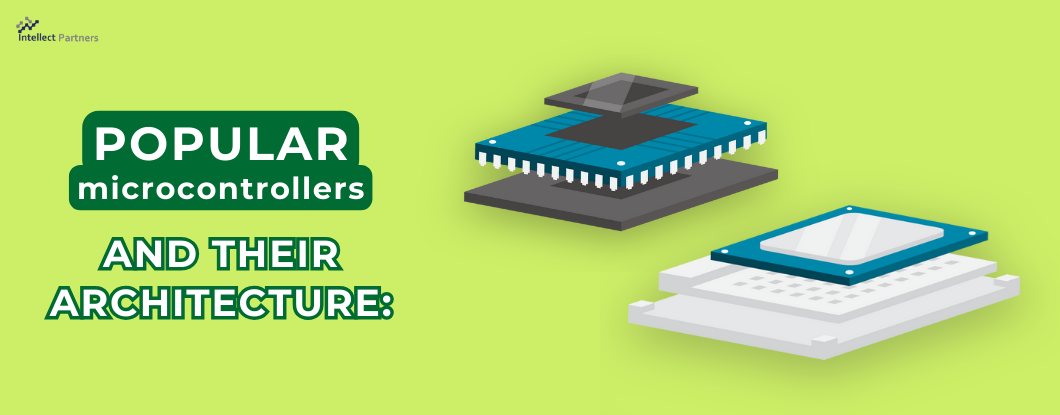Microcontrollers
A microcontroller is a programmable processing element with an embedded memory system and multiple programmable input and output peripherals. The peripherals can be advanced GPU, coprocessors, or other electronic components. Microcontrollers are used in different electronic devices for implementing various applications.
It can be used in the device, which can be automatically controlled. Further, it is mostly used in automobiles, computer systems, and different appliances.
There are multiple manufacturers of microcontrollers in the market. Such as
- Cypress Semiconductor
- NXP Semiconductor
- Silicon labs
- ARM
- MIPS
- Maxim Integrated
- Renesas
- Intel
- Microchip technology
we will learn about the different components of the popular microcontrollers from three manufacturers.
Texas Instrument C2000 MCU
Texas Instrument makes multiple products ranging from all electronic devices, including MCUs. Different MCUs being produced by Texas Instruments are ARM-based MCUs, C2000 MCUs, DSPs, and MSP430 microcontrollers. The most popular MCUs of Texas Instruments are C200 MCUs, used in various electronic devices to perform different control operations, such as digital power and motor control.
C2000 MCUs:
Each C2000 MCU is a combination of multiple configurable blocks that are interconnected. Each CLC can be configured to perform custom operations as per configuration information.
Feature of C2000 Microcontrollers:
1. It provides high computational capabilities with an advanced floating-point data processing unit.
2. It implements a highly accurate ADC converter.
3. It implements integrated comparators for performing comparison operations.
4. It implements a very high communication interface for the communication of signals and data.

Implementation of C2000 Microcontrollers:
The microcontroller can help us to make independent custom logic units to perform different custom logical operations. The MCUs implement multiple Configurable Logic Cells (CLC) in the system, which can be configured or programmed for custom operations. Multiple custom logical units are connected using different local or Universal buses. Each CLC is associated with a PWM module for powering up the CLC. The global bus further connects multiple CLBs.
The input of one CLB can be inputted to another CLB to create a cascading effect.


Each CLB unit includes multiple CLB sub-modules, namely:
- 4-Input Look-up table (LUT) submodules – LUT unit helps to create any boolean operations using up to 4 inputs
- 4-State Finite State Machine (FSM) – 4-State FSM generates up to 4 states based on input received.
- Counter unit – The counter can act as a counter, shifter, or adder. As a counter, it can count up or down; as a shifter, it can shift right or left; as an adder, it can add or subtract.
- Output Look-up table (LUT) – The output LUT can be configured with boolean operations.
- High-Level Controller (HLC) – The HLC can perform different control operations in the system. The HLC performs data exchange or interrupt operations.

Link to documentation of TI C2000 MCUs are:
https://www.ti.com/microcontrollers-mcus-processors/c2000-real-time-control-mcus/overview.html
https://www.ti.com/lit/an/spracn0f/spracn0f.pdf?ts=1702390944874
https://www.ti.com/lit/ug/spruii0e/spruii0e.pdf?ts=1702390956144
https://www.ti.com/lit/ug/spruin7b/spruin7b.pdf?ts=1702390972904
NXP S32V2 Processors
NXP has been active in the microcontroller market for a long time. NXP S32V2 MCUs form vision processors for processing images using its APEX-2 vision accelerators in sensing apparatus. It offers an image signal processor and a 3D graphics processing unit (GPU). They are extensively used in ADAS to detect object and image recognition operations.
S32V2 Processor:
The MCU features an APEX-2 vision accelerator for implementing image processing operations using the APEX core framework and an APEX graph tool for sensing different objects ahead of it. The NXP MCu has been implemented in the Bluebox engine for autonomous driving.
Implementation of S32V2 Processor:
- Cortex processor A53 for processing different inputs.
- APEX-2 vision accelerators:
- GPU and Hardware security encryption mechanism
- Fabric and internal memory

The APEX processing unit implements two APUs and 16 computational units (CU), and each CU includes four functional units: Multiplier, Load-store, ALU, and shifter unit.
Each APU is a parallel processor for processing different computational operations. The APU manages the execution and data movement by dispatching instructions to different CUs.
It has been extensively used in 3D content creation, advanced driver assistance, and video surveillance for recognizing different objects. And people.


The ACP is a 32-bit RISCV-based processor. The APU implements both scaler and SIMD capabilities. The scaler processing is performed in the Array control processor (ACP) unit. Vector processing is done at the Vector processing unit.

Link to documentation of NXP S32V2 MCUs are:
https://www.nxp.com/docs/en/data-sheet/S32V234.pdf
https://www.nxp.com/webapp/Download?colCode=S32V234RM
Silabs EFM8 Busy Bee MCU
Silicon Labs’s Laser Bee MCU includes analog-intensive MCUs. This MCU offers high computational operations, including 14-bit ADC, temperature sensors, and high-speed communication peripherals in packages.

Implementation of Silabs EFM8 Busy Bee:
- It includes up to four configurable logic cells.
- They are used in different apps and locations that require programmable operations.
- Each unit supports 256 other combinational logic functions. Such as AND, OR, XOR, and multiplexing.
- Each CLU has a look-up logic (LUT) logic function that can be used to perform 256 different operations. Each CLU contains a D flip-flop, whose input is the LUT output. Multiple CLUs can be cascaded together to achieve some functions.

Link to documentation of TI C2000 MCUs are:
https://www.silabs.com/mcu/8-bit-microcontrollers/efm8-laser-bee
https://www.silabs.com/documents/public/training/mcu/em8-mcu-overview.pdf
https://www.silabs.com/mcu/8-bit-microcontrollers/efm8-bb5
https://www.silabs.com/documents/public/application-notes/AN921.pdf
https://www.silabs.com/documents/public/training/mcu/efm8-lb1-clu.pdf













